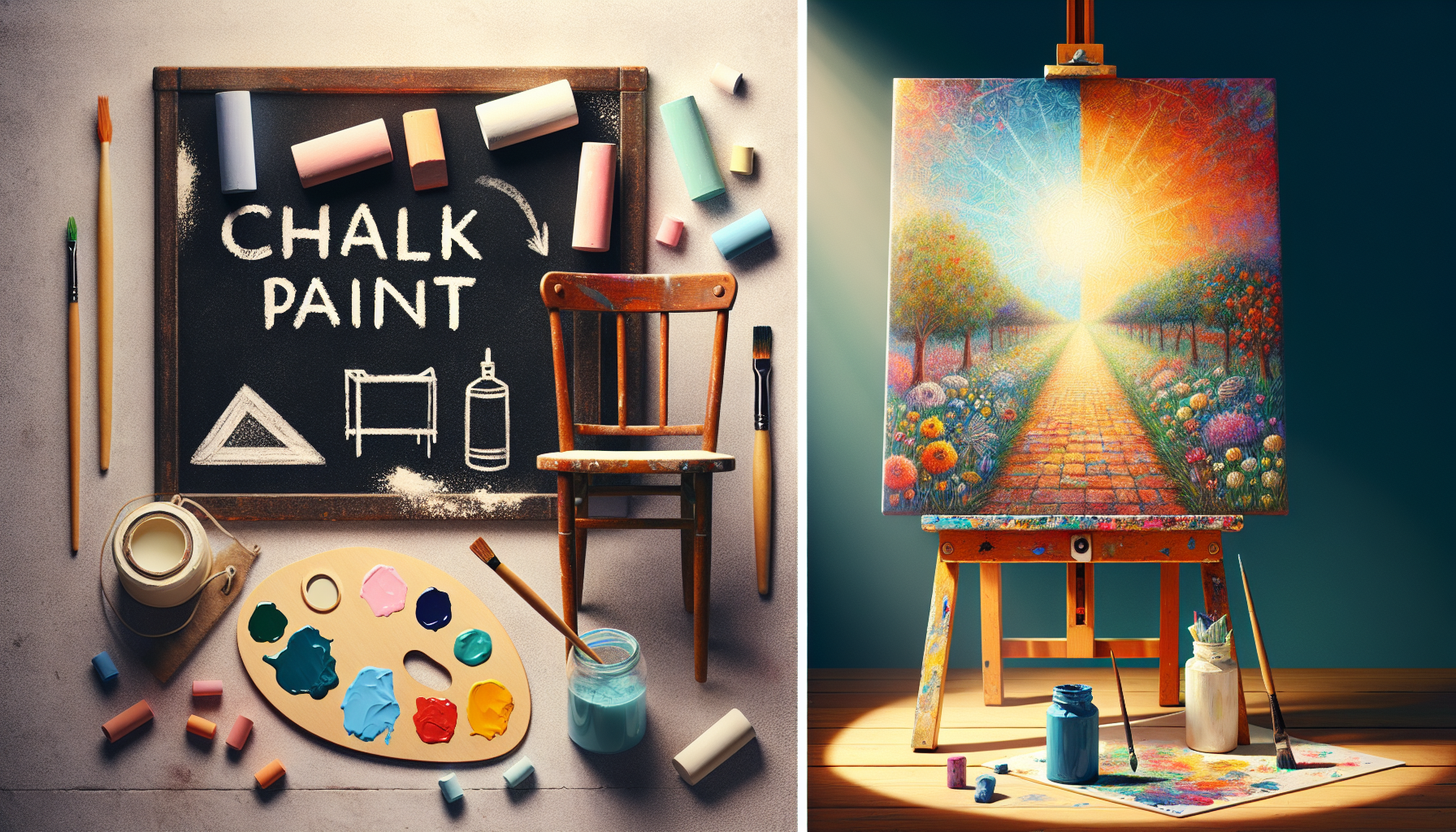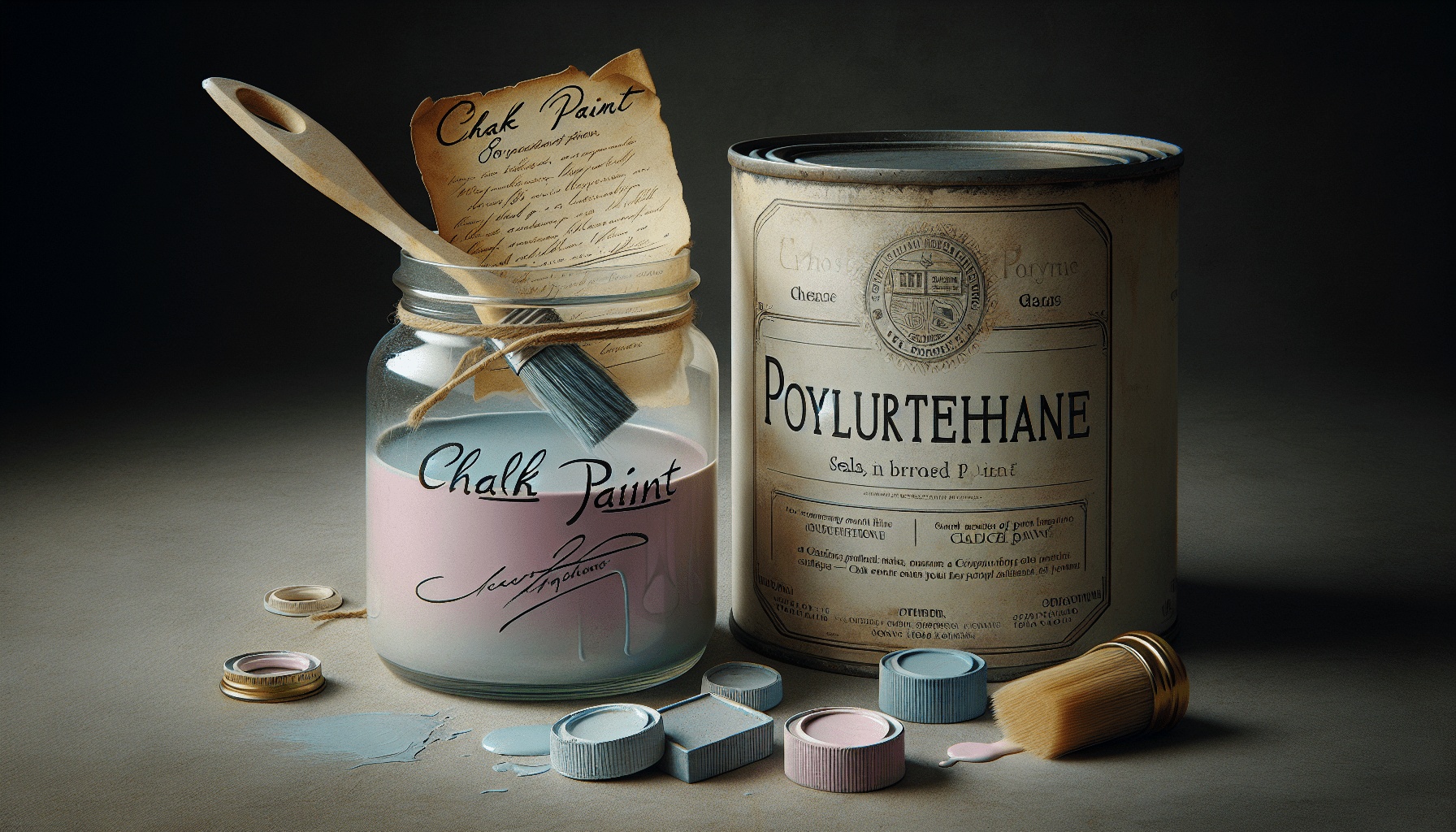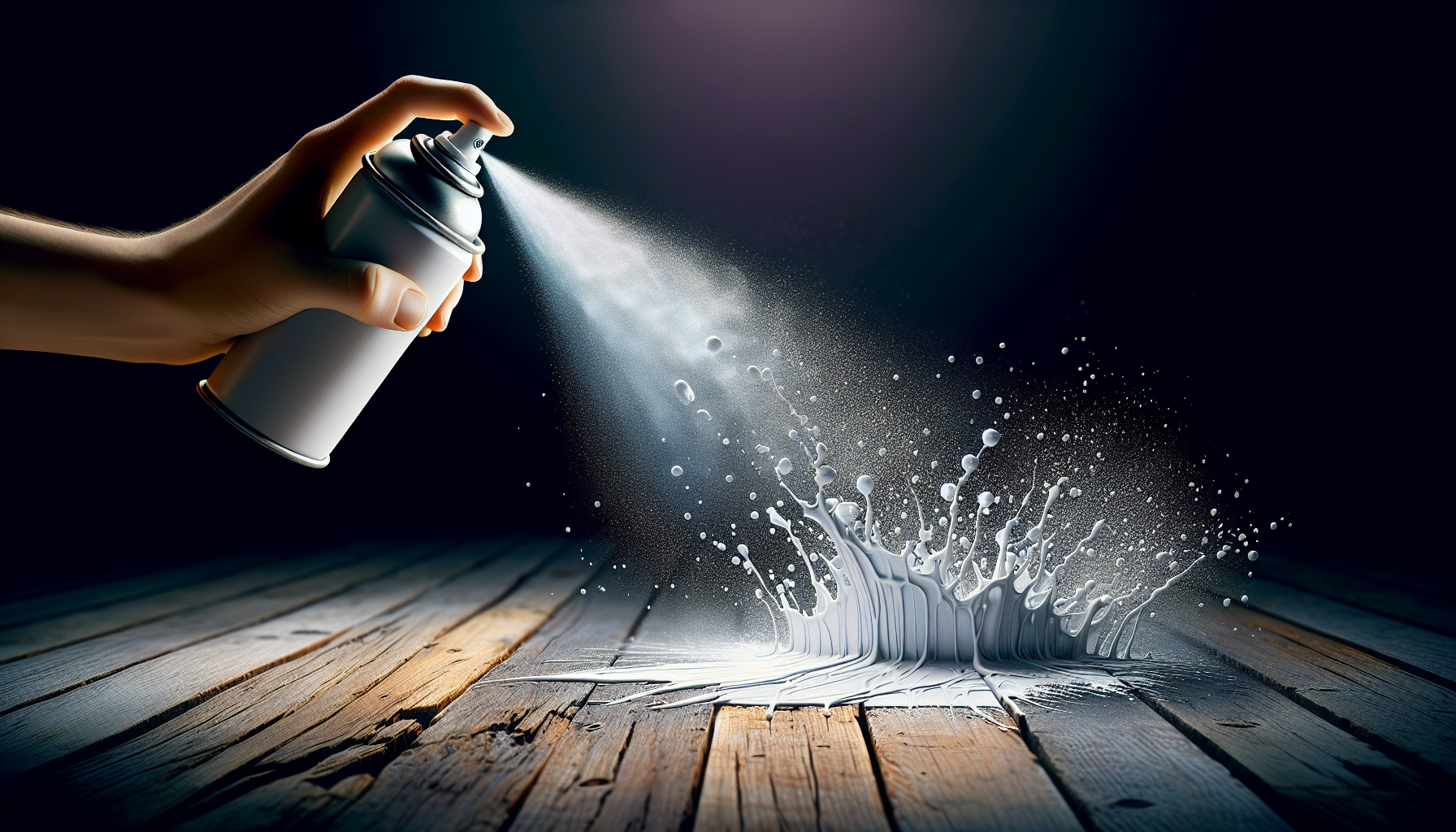In the realm of creative expression, the versatility of chalk paint is widely acclaimed. However, a lingering question remains among artists and enthusiasts alike: can you tint chalk paint? Whether you are looking to add a subtle hue or a bold burst of color to your creations, this article will explore the exciting possibilities of tinting chalk paint, providing practical advice and guidance for achieving the desired result. Discover the techniques, considerations, and recommended products that will empower you to transform your chalk paint projects into captivating and personalized works of art.

What is Chalk Paint?
Definition of chalk paint
Chalk paint is a type of paint that is known for its matte, velvety finish and its ability to adhere to various surfaces without requiring extensive preparation or priming. It was originally developed by Annie Sloan, who wanted to create a versatile and user-friendly paint that could be used on furniture, walls, and other decorative items. Chalk paint gets its name from the fact that it has a soft, chalky appearance once dry.
Benefits of using chalk paint
There are several benefits to using chalk paint. Firstly, it is incredibly easy to use, making it suitable for both beginners and experienced painters. It requires minimal surface preparation, as it can be applied directly to most surfaces, including wood, metal, and even glass. Chalk paint also dries quickly, allowing for multiple coats or layers to be applied in a relatively short amount of time. Furthermore, it has excellent coverage and opacity, meaning that fewer coats are often needed compared to other types of paint. Additionally, chalk paint is highly durable and can withstand regular wear and tear, making it perfect for furniture or high-traffic areas.
Common uses for chalk paint
Chalk paint is incredibly versatile and can be used for various purposes. One of the most common uses for chalk paint is for refinishing furniture. Whether it’s an old dresser, a dining table, or a wooden chair, chalk paint can transform these pieces into stylish and trendy additions to any space. Chalk paint is also popular for creating unique home decor items, such as picture frames, decorative trays, or even flower pots. Additionally, chalk paint can be used to refresh walls or create accent walls, giving a room a shabby-chic or vintage-inspired look. The possibilities are endless when it comes to using chalk paint, and it provides a great opportunity for creativity and personalization.
Understanding Tinting
Definition of tinting
Tinting refers to the process of adding color to a paint or a medium in order to achieve a desired hue or shade. It involves mixing pigments, dyes, or other coloring agents with the paint base to alter its color. Tinting is commonly used in the world of paint to customize colors and create unique shades that cannot be achieved with pre-mixed paint colors.
How tinting works with paint
Tinting works by introducing colorants to the base paint in small amounts and gradually adjusting the color until the desired shade is achieved. The colorants used for tinting can be in the form of pigments, which are fine powders, or liquid dyes. These colorants are carefully measured and mixed with the paint base, whether it is chalk paint or another type of paint. The amount of colorant added will depend on the desired intensity of the tinted paint. Tinting can be done by hand using basic colorants or through computerized systems in paint stores, which can accurately reproduce specific colors based on a color code or swatch.
Popular reasons for tinting paint
Tinting paint offers several advantages and is commonly done for various reasons. One popular reason for tinting paint is to match existing colors or create custom colors that complement a particular design scheme or decor style. By tinting paint, it is possible to achieve specific shades and undertones that are not available in pre-mixed paint colors. Tinting also allows for more flexibility and creativity when it comes to painting projects. It can be used to create unique effects, such as ombre or gradient finishes, or to add depth and dimension to surfaces. Additionally, tinting paint can help to cover imperfections or flaws in a surface by incorporating color that camouflages them effectively.
Can Chalk Paint be Tinted?
General potential for tinting chalk paint
Yes, chalk paint can be tinted to achieve custom colors or to match existing color schemes. While chalk paint is known for its limited color palette, it is possible to expand the range of colors by tinting it with various coloring agents. Tinting chalk paint gives it a whole new dimension and allows for endless possibilities in terms of color choices and customization.
Factors to consider when tinting chalk paint
There are a few factors to consider when tinting chalk paint. Firstly, it is important to choose compatible coloring agents that are suitable for use with chalk paint. Pigments, dyes, or even stains can be used to tint chalk paint, each with its own characteristics and effects. Secondly, the desired color and intensity should be carefully considered, as the amount of coloring agent added will determine the final result. It is recommended to start with small amounts and gradually add more until the desired color is achieved. Additionally, it is essential to mix the tinting agent thoroughly and consistently to ensure an even distribution of color throughout the paint.
Limitations of tinting chalk paint
Although chalk paint can be tinted, it is important to be aware of its limitations. Chalk paint already has a unique composition and properties that give it its distinctive finish. Tinting the paint may alter these properties to some extent, including its texture or coverage. It is also important to note that some colors may be more challenging to achieve when tinting chalk paint, especially vibrant or intense hues. Therefore, it is advisable to test the tinted paint on a small, inconspicuous area before applying it to the entire surface to ensure the desired result is achieved.
Tinting Chalk Paint with Pigments
Types of pigments for tinting chalk paint
When tinting chalk paint with pigments, there are several options available. Traditional earth pigments, such as sienna, umber, or ochre, can be used to achieve a range of warm and natural hues. Synthetic or organic pigments are also commonly used and provide a wider range of colors, including vibrant options. It is important to choose pigments that are compatible with chalk paint and are safe for use on furniture or decorative pieces.
Steps to tint chalk paint with pigments
To tint chalk paint with pigments, begin by selecting the desired coloring agents. In a separate container, mix a small amount of the chosen pigment with a small portion of chalk paint, ensuring thorough blending. Gradually add the tinted mixture to the remaining chalk paint, stirring continuously to achieve a consistent color. It is crucial to mix well, ensuring all pigment particles are evenly distributed. Test the tinted paint on a small area or piece of scrap wood to verify the desired color before applying it to the intended surface.
Tips for achieving desired color
When using pigments to tint chalk paint, it can be helpful to keep a few tips in mind. Firstly, start with a small amount of pigment and gradually add more, as it is easier to darken the color than to lighten it. Secondly, consider the base color of the chalk paint, as it will interact with the pigment to create the final color. A white or light-colored base will generally produce more vibrant and true-to-color results, while a dark base may require more pigment to achieve the desired intensity. Finally, keep in mind that pigments can settle over time, so it is essential to stir or shake the tinted paint before each use to ensure an even distribution of color.

Tinting Chalk Paint with Acrylic Paint
Using acrylic paint to tint chalk paint
Tinting chalk paint with acrylic paint is another option when seeking to customize colors. Acrylic paint comes in a wide range of colors, finishes, and viscosities, making it a versatile choice for tinting chalk paint. It is important to choose high-quality acrylic paint that is compatible with the chalk paint base and will not compromise the overall quality and performance of the finished piece.
Mixing acrylic paint with chalk paint
To tint chalk paint with acrylic paint, start by selecting the desired acrylic color or colors. Begin with a small amount of acrylic paint and gradually mix it into the chalk paint. It is crucial to blend the two paints thoroughly to ensure a consistent color. As with pigments, it is recommended to test the tinted paint on a small area or scrap piece before applying it to the entire surface. This will help to verify the color and determine if any adjustments are needed.
Effect on chalk paint finish
Tinting chalk paint with acrylic paint may alter the finish and characteristics of the final product to some extent. Acrylic paint has a different texture and sheen compared to chalk paint, which could result in a slight change in the overall appearance. The addition of acrylic paint may also affect the coverage and drying time of the chalk paint. It is important to consider these factors and experiment with different ratios and brands of acrylic paint to achieve the desired result.
Tinting Chalk Paint with Stains
Choosing compatible stains for tinting chalk paint
Stains can provide a unique and rich color to chalk paint when used for tinting. It is important to choose stains that are compatible with the chalk paint and are designed for use on wood or porous surfaces. Oil-based or water-based stains are commonly used for tinting chalk paint, each with its own characteristics and effects.
Applying stains to chalk paint
To tint chalk paint with stains, begin by selecting the appropriate stain color or colors. In a separate container, mix a small amount of the chosen stain with a small portion of chalk paint, ensuring thorough blending. Gradually add the tinted mixture to the remaining chalk paint, stirring continuously to achieve a consistent color. It is crucial to mix well to ensure the stain is evenly distributed throughout the paint. As always, test the tinted paint on a small area or scrap piece before applying it to the intended surface to ensure the desired color is achieved.
Benefits and limitations of this method
Tinting chalk paint with stains offers several benefits, including the ability to achieve rich and unique colors that resemble wood stains. This method can also enhance the natural texture and grain of the surface. Additionally, stains are generally easy to work with and provide long-lasting color. However, it is important to note that stains may alter the consistency and coverage of the chalk paint. They may also require additional sealing or topcoating to protect the stained surface and ensure its durability.
Tinting Chalk Paint with Watercolors
Using watercolors to tint chalk paint
Watercolors can provide an interesting and delicate effect when used to tint chalk paint. They offer a wide range of colors and shades, making them suitable for achieving soft and subtle hues. It is advisable to choose high-quality watercolors that are lightfast and compatible with the chalk paint base to ensure long-lasting and stable colors.
Techniques for achieving desired effects
To tint chalk paint with watercolors, mix a small amount of watercolor pigment with a small portion of chalk paint, ensuring thorough blending. Gradually add the tinted mixture to the remaining chalk paint, stirring continuously to achieve a consistent color. It is crucial to mix well, ensuring the watercolor pigment is evenly distributed throughout the paint. Watercolors can be layered to achieve desired effects, such as a washed or translucent look. Experiment with different watercolor pigments, dilutions, and layering techniques to achieve the desired color and effect.
Sealing watercolor-tinted chalk paint
After tinting chalk paint with watercolors, it is important to seal the finished piece to protect the watercolor-tinted surface. Watercolors are water-soluble and may reactivate or smudge if exposed to moisture. Applying a clear sealant, such as a wax or polyurethane, will help to protect the watercolor-tinted chalk paint and ensure its longevity. It is important to choose a sealant that is compatible with both chalk paint and watercolors to maintain the desired appearance and finish.
Tinting Chalk Paint with Latex Paint
Combining latex paint with chalk paint
Tinting chalk paint with latex paint offers a wider range of colors and finishes. Latex paint is known for its versatility and availability in various sheens and shades. When combined with chalk paint, it can create custom colors and add different characteristics to the finished piece. It is crucial to choose high-quality latex paint that is compatible with the chalk paint base and will not compromise the overall quality and performance of the project.
Mixing ratios and considerations
To tint chalk paint with latex paint, start by selecting the desired latex color or colors. Begin with a small amount of latex paint and gradually mix it into the chalk paint, ensuring thorough blending. The amount of latex paint added will depend on the desired color and intensity. It is recommended to start with a smaller amount and gradually add more until the desired shade is achieved. As always, test the tinted paint on a small area or scrap piece before applying it to the intended surface to ensure the desired color is achieved.
How it affects the chalk paint finish
Tinting chalk paint with latex paint may alter the finish and texture of the chalk paint to some extent. Latex paint has different properties, including a glossier finish, compared to chalk paint. The addition of latex paint may also affect the coverage, drying time, and overall durability of the chalk paint. It is important to consider these factors and experiment with different ratios and brands of latex paint to achieve the desired result. Applying a clear topcoat or sealant can help to unify the finish and protect the tinted chalk paint.
Experimenting with Natural Ingredients
Exploring natural options for tinting chalk paint
For those seeking a more eco-friendly or unconventional approach to tinting chalk paint, natural ingredients can be used to achieve unique colors and effects. Ingredients such as turmeric, coffee, berries, or even spices like paprika or cinnamon can provide interesting and unexpected tints. It is important to note that natural ingredients may produce temporary or less durable colors compared to pigments or other coloring agents.
Preparation and application methods
When experimenting with natural ingredients for tinting chalk paint, it is important to extract or prepare the desired coloring agent properly. For example, with berries, it may be necessary to crush or boil them to extract the color. Once the coloring agent is ready, mix it with a small portion of chalk paint in a separate container. Gradually add the tinted mixture to the remaining chalk paint, stirring continuously to achieve a consistent color. It is essential to mix well, ensuring the natural ingredient is evenly distributed throughout the paint. As always, test the tinted paint on a small area or scrap piece before applying it to the intended surface to ensure the desired color is achieved.
Tips and Considerations
Testing the tinting result on a small area
Before applying the tinted chalk paint to the entire surface, it is important to test the result on a small, inconspicuous area. This will allow for any necessary adjustments to be made to the color or the tinting process. It is crucial to ensure the desired effect is achieved before committing to the larger project.
Proper mixing techniques
Regardless of the coloring agent used, proper mixing techniques are essential for achieving consistent and even color throughout the tinted paint. Whether using pigments, acrylic paint, stains, or natural ingredients, it is important to mix thoroughly, ensuring all particles or components are evenly distributed. This can be done by stirring or shaking the container vigorously, or by using a mixer or paint shaker for larger quantities.
Using additional mediums or binders
Depending on the desired effect or finish, additional mediums or binders can be added to the tinted chalk paint. Mediums such as glazing or extender mediums can alter the transparency or viscosity of the paint, allowing for different application techniques and effects. Binders such as clear sealants or topcoats can be applied to protect the tinted paint and enhance its durability and longevity. It is important to choose mediums or binders that are compatible with chalk paint and will not compromise its unique characteristics.
In conclusion, while chalk paint itself offers a wide range of benefits and possibilities, tinting it can further enhance its versatility and allow for more customization. Whether using pigments, acrylic paint, stains, watercolors, latex paint, or even natural ingredients, tinting chalk paint provides an opportunity to create unique colors and effects. It is important to consider factors such as compatibility, testing, and proper mixing techniques to achieve the desired results. With the right techniques and experimentation, anyone can enjoy the endless possibilities of tinted chalk paint.



